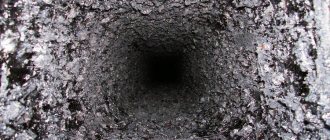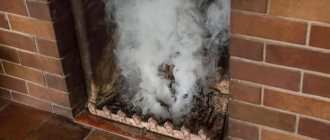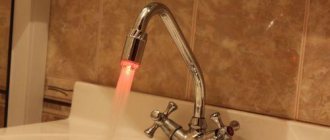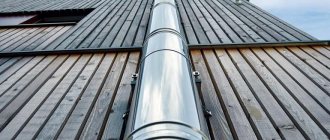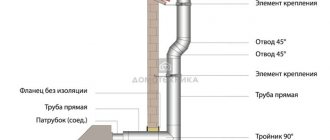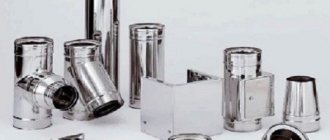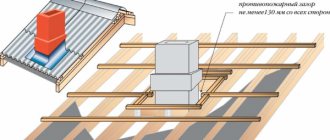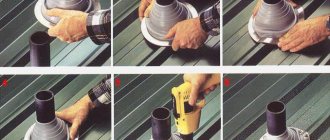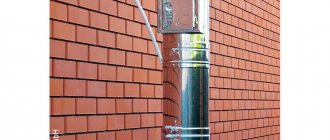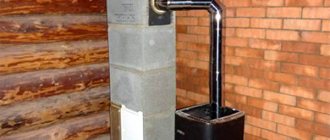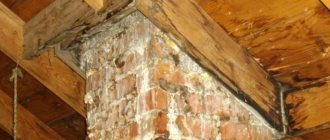Even proper operation of the vertical channel cannot guarantee the absence of soot on the pipe walls. Therefore, the question of how to clean a chimney from black deposits does not lose its relevance to this day. If you do not prevent the build-up of a soot layer in a pipe device, this can lead to a violation of draft, which in turn can lead to a fire in the room.
Today it is quite difficult to find professional chimney cleaners. Only they are able to carry out high-quality work even in hard-to-reach places. Specialists clean any bend in the pipe and also check the condition of the entire structure. It is incredibly difficult to achieve a good result and completely clean the canal on your own. But still, let's figure out how to do it correctly.
PHC compositions
This powder, which is poured into the firebox, has anti-carbon properties. Its composition is similar to copper sulfate. Approximately 200 g of this substance is enough to clean after burning 1 ton of firewood.
"Comedian"
It has the form of a powder, the catalysis of which begins during heat treatment. At the same time, there is a decrease in the temperature at which all soot burns.
"Log Chimney Sweep"
Produced in briquettes and used in conjunction with other types of fuel (solid, liquid). To clean small fireplaces, one piece of pelletized material is placed for a period of 60 days. If the oven size is large, you will need to use two briquettes.
Before you start using Polen, you need to clear the chimney of debris. The product is burned on hot coals directly in the package. Its active ingredients will last approximately 14 days. After this, you need to inspect the chimney, then start cleaning the firebox.
Cleaner HG
This chemical, manufactured in Holland, is intended to remove plaque from household pipes. The manufacturer recommends using this powder once every 6 months. It is enough to pour two tablespoons of the product onto hot solid fuel.
Before using any of the chemical products described above, you should carefully study the instructions included with the product. It is mandatory to comply with all specified requirements.
Not every summer resident is able to use such cleaning compounds. This problem can be solved in another way by turning to folk remedies.
TOP 5 cleaning chemicals or what the market offers us
Cleaning a chimney with your own hands is a real thing, but troublesome, we’ll talk about this a little later, but now we’ll look at the method that 95% of owners choose - buy a chimney cleaner, throw it into the firebox according to the instructions and forget about the problem.
No. 1 Products from the brand – Dymovoy
Domestic chimney cleaning products from the Dymovoy brand have proven themselves to be quite high-quality products. There are currently 3 variants of cleaners in the line.
| Photo | Recommendations |
| Box The most popular is the chimney cleaning kit. It looks like a regular box. According to the instructions, you need to remove the packaging polyethylene and throw the box into the firebox over the dying coals. The contents of the box will smolder for about an hour and a half, the product will dry the soot, and then, within 2 weeks, it will fly out into the chimney and fall into the firebox. The price of the box is about 600 rubles. | |
| Log As practice has shown, people like the chimney cleaner made in the form of a log more. The instructions and principle of operation here are the same as in the case of the box, but the price is for a log weighing 750 grams. is only 400 rubles. Perhaps this is the secret of popularity. | |
| Pellets Among chemical products, pellets are considered a narrow-profile option; they are used only for cleaning the chimneys of boilers running on pellets. The material is packaged in 5 kg packs, the price of 1 package is 850 – 900 rubles. According to the instructions, 1 ton of fuel requires 10 kg of purifier. On average, cleaning the boiler and chimney from soot is carried out once every 2 months. The video below in this article shows cleaning a pellet boiler with “Dimovaya” pellets. |
No. 2 Products from the brand – Chimney Sweep
Chimney Sweep products for cleaning chimneys appeared on the market almost simultaneously with products from the Dymovaya company; the most popular here is the Chimney Sweep log for cleaning chimneys. The line includes 3 types of logs weighing 750 g. 800 gr. and 1.3 kg, the price for them ranges from 220 to 550 rubles.
To clean the chimney of a potbelly stove or small fireplace, a log weighing 800 grams is enough, but to clean a large stove you will have to buy a chimney cleaner weighing 1.3 kg
No. 3 Cleaner from “Hansa”
The German brand “Hansa” has been on our market since the nineties, it produces one cleaning product, but in different packaging; you can buy a box with single-use sachets or a jar with a measuring spoon and pour in the powder at your discretion. Hansa powder does an excellent job of removing a thick layer of ingrained creosote, and the exfoliated mass burns out completely.
The cost of a half-kilogram box with 10 single-use bags is about 750 rubles, the same weight in a jar will cost 600 rubles, but it is most profitable to take a kilogram jar, the price for which fluctuates around 900 rubles.
"Hansa" makes an excellent product for cleaning chimneys from soot; it is most profitable to use the product packaged in kilogram jars
No. 4 Cleaner from the Vortex brand
Vortex chimney cleaning log is the only product supplied to our market by this brand. The product is quite good, the instructions are standard, we talked about them above. The advantage of such logs is that their price is relatively low, it ranges from 220 to 375 rubles, which is rare for a German company.
Logs from Vortex have established themselves as a fairly high-quality product
No. 5 Kominichek product
Bags of granules from the Czech company have been supplied to us since the times of the Soviet Union. Judging by the reviews, this chimney cleaner is not the best. One one-time sachet is designed for 1 kg of fuel, that is, you light 1 kg of wood or coal in the firebox and throw the sachet into the fire.
The manufacturer admits that the chemical is intended for prevention and not to combat soot build-up, plus users note the unpleasant odor of the product. As for the cost, the price of one pack of Kominichek with 5 single-use sachets ranges from 350 to 550 rubles.
At the moment, Kominichek is not very popular
Proven folk methods
The most effective methods include the following:
- Rock salt . It perfectly cleans the channel and removes accumulated soot from the walls. The substance in an amount of 100-200 g is placed in a thin layer in the firebox. This technique corresponds to preventive work to remove soot from the chimney.
- Potato peel. This product gives very good results. The cleaning bucket must be placed in small parts into the burning firebox. They begin to burn together with the starch that is part of the potato. Hot air enters the channel and loosens the soot. This technology is considered preventive. Subsequent cleaning of the chimney is done manually.
- A weight with a brush attached to a strong cord. This element is lowered inside the pipe, cleaning the inner surface and removing existing deposits.
- Birch or aspen logs. It is enough to heat the pipe with such pieces of wood to a high temperature. As a result, soot will begin to burn out. This technique must be used with caution. With large deposits and low strength of the chimney, dangerous situations may arise, since aspen logs have high heat transfer.
- Naphthalene . This chemical perfectly cleans the inside surface of the chimney. To use it, you must first check the pipe for cracks. If there are any, they must be sealed. A mothball tablet is thrown into the firebox. The heated soot begins to fly out of the pipe in the form of white flakes. It is important to remember that using mothballs is unsafe, since this product can destroy pipes and ignite soot deposits. One of the disadvantages of this technology is the unpleasant, pungent odor. High cleaning efficiency is achieved with a plaque thickness of no more than 10 mm.
- Walnut shells. This is an excellent product with high heat transfer. You need to throw no more than 2 liters of the hard shell of the nut into the firebox. During combustion, the temperature rises to critical values, which can lead to deformation of the pipe and the appearance of cracks. That is why such a restriction was established. Due to the strong burnout, the soot is completely removed from the pipe.
- Aluminum. Parts made of this material burn well in high heat and prevent the formation of soot. To prevent aluminum from changing color and burning, the fire must be on coals. For example, it will take only five minutes to burn a can made of this non-ferrous metal.
Features of cleaning stainless steel pipes
Such chimneys are characterized by high quality internal surfaces. This property allows condensate to flow freely down into the condensate collector, from where it is periodically drained and disposed of. The absence of condensation prevents the formation of soot. But carbon deposits, for various reasons, still form and need to be cleaned. This is done as follows:
- Through the hole in the tee, a round brush on a flexible shaft is inserted into the pipes. Carbon deposits are cleaned by rotating the brush from an electric drill. As you move, the drive shaft increases in length to clean the entire length of the pipe.
- If the carbon deposits are persistent, cleaning can be done by burning them out using a blowtorch. To do this, it is necessary to dismantle the chimney and burn it out. At a temperature of 800-900 degrees, sufficient for the intended purpose, even tarnished colors will not appear on a high-quality stainless pipe.
- After cleaning is completed, it is advisable to insulate the chimney riser in order to move the dew point outside the chimney.
You should pay attention to the quality of stainless pipes. The described option is only suitable for austenitic stainless steel. If you were sold pipes made of ferritic or semi-ferritic steel, they most likely will not have the required performance qualities. Determining compliance is simple - normal stainless steel is not magnetic.
The need to clean the inner surface of sandwich pipes does not arise often - condensate flows out of them regularly. But if you suddenly need to carry out this procedure, then you need to use an elongated cylindrical brush on a flexible drive cable that receives rotation from an electric motor.
You can also disassemble the chimney and clean each pipe separately.
Cleaning the chimney from tar deposits
Some fuels form viscous components from condensate and low-flammability creosote components. They are very difficult to fight and difficult to clean.
To reduce the likelihood of the formation of such precipitation, the chemical preparation “Hansa”, which is a crystalline substance, is used. It has a complex composition, one part of which promotes the decomposition of wood into resin and water vapor, and the second part decomposes the resin into flammable components, which burn here. Previously deposited tar stains on the walls of the chimney also decompose into small crystals and fall into the firebox.
"Hansa" is loaded into a burning firebox. At the beginning of the heating season it should be used daily, then periodically. Details on the packaging.
Cleaning a curved chimney from soot
Installing a chimney with a bend is the last solution worth turning to. This is mainly due to the design features of the house. Cleaning a pipe elbow is not difficult if you have taken care in advance of installing inspection hatches during installation.
Through them, the pipe can be cleaned without much difficulty. However, it is not advisable to install more than two bends on one chimney. It is mandatory to install a cleaning hatch.
Cleaning the chimney of a gas boiler or water heater
The reason for performing such an operation will be a decrease in traction. This poses a considerable danger, especially when it comes to fitting into an apartment building. In such a situation, not only the residents of one apartment are at risk.
The pipe will not determine the reduction in thrust. The signal may be the “popping” of the igniter. Cleaning the chimney of a gas water heater is similar to cleaning a conventional stove duct.
What tools are needed?
To carry out cleaning work, it is important to prepare all the necessary equipment, including the following:
- metal brush;
- a brush with very stiff bristles;
- flexible clamps;
- scraper;
- bucket;
- chemical substances;
- a metal ball whose diameter is equal to 2/3 of the chimney.
The steel core is used for various purposes. Its main function is to remove blockages. But if you attach a brush to it, this element will become much heavier, and accordingly, the efficiency of cleaning the chimney walls will increase several times. If you connect all the parts with a metal cable and use carabiners, you can adjust the length of the cleaning device.
How to get rid of soot smell
After cleaning, no matter how diligently it is, there is still a burning smell in the room.
To eliminate the odor, you can do the following:
- Ventilate the room for a long time. If the weather does not allow you to open the windows, you need to close the door tightly and turn on all air conditioners and fans for 1-2 hours.
- Walk over all surfaces with cotton wool soaked in a weak vinegar solution (1 tbsp per 5 liters of water). You can’t use more vinegar, because it leaves its own smell.
- Hang wet bed linen and towels around the room. They will absorb the smell, but then you will have to throw them away.
- Place several large bowls of water with essential oils on the floor. The proportions are not important, only the aroma.
- Run a hot bath and open the door wide. Turn on the steam generator and humidifier, if you have such devices.
Sequence of mechanical cleaning
- The oven doors must be tightly closed to prevent soot from falling out.
- If deposits in the fireplace are being removed, a damp cloth must be placed on the combustion chamber.
- To make the channel cross-section larger, you need to open all existing dampers.
- A safety belt must be placed on the body and secured well.
- The chimney is inspected on the roof. If the thickness of the soot layer is less than 2 mm, it is removed using chemicals. The garbage is simply pushed down.
- The header is removed. Use a stiff brush or scraper to remove all layers.
- Cleaning hard-to-reach places is done using a flexible brush. You can also use a cable that has a special attachment at the end. With each turn of the handle, the device moves downward.
- By moving the suspended metal ball, you can remove a layer of soot and other large blockages. Work must be carried out carefully so as not to damage the integrity of the brickwork.
- After opening the chimney door, the soot layer is completely removed.
- The blower and combustion chamber are cleaned.
If plaque is removed in an open-type fireplace, the treatment is performed with a metal brush from the side of the firebox.
Upon completion of the procedure, it is necessary to light the stove to check the draft. The head is then installed in place.
Cleaning the chimney using mechanical means
Any mechanical means for cleaning a chimney can effectively combat internal soot accumulation. You can clear soot from the chimney using the following mechanical means:
Cleaning with brushes. This method is one of the most proven and oldest. In order to clean the chimney with a brush, you need to buy or make this device yourself. It has the following design - the cable itself should be as long and flexible as possible, and a large brush-brush should be attached to its end. For additional convenience, you can buy or attach a small plastic, rubber or metal handle to the end of the device yourself;
For additional ease of use, you can attach a small metal ball directly under the brush. Due to this, the brush will move down well when cleaning. The size of the brush is selected individually, depending on the diameter of the chimney pipe.
Important: when cleaning the chimney in this way, it is necessary to work with gloves and a respirator, since with proper and well-functioning draft, all formations and soot come out and can get into both the face and the respiratory tract. Cleaning the chimney with a brush is done from the roof side, so you need to work especially carefully.
Means for cleaning chimneys from soot - mechanical
Means for cleaning the chimney from soot - brushes of various diameters
- To clean sandwich pipes, you need a slightly different brush. Its design must also be flexible. However, it consists of many elements that are connected to each other during pipe cleaning. Sandwich pipes, due to their high height, must be cleaned from bottom to top;
- To clean a stove or boiler, you must first remove the storage tank to collect condensate and only after that start reading the chimney. If there is no such hole in the stove, cleaning is carried out directly through the firebox. If you still cannot clean the chimney, you will have to disassemble it or use the services of professionals.
How to blow out a chimney yourself with air
Another option for cleaning the vertical channel from accumulated soot is to blow it with a powerful air stream. To do this, it is necessary to create a turbulent flow in the device, which, under high pressure, will blow all the dirt out of it. This work can only be done with a very powerful fan.
You can use a regular chainsaw as an air blower. The flow of the gas mixture must be drawn outward by the device.
This technique does not remove all deposits. Heavy deposits can only be cleaned mechanically.
Time to clean the heat exchanger
When it is necessary to flush the heat exchanger of a gas boiler is a common question. There are a number of signs by which you can be sure that the time has come.
Some of the main ones:
- constantly switched on gas burner;
- the circulation pump has become noisier, which means it is overloaded;
- heating radiators began to heat up longer;
- gas consumption increases;
- The water pressure has become weaker (the first sign for flushing a double-circuit boiler).
In addition to cleaning the chimney, the boiler is also cleaned of soot. If the operation of the chimney is difficult, then in some cases it turns off, but if it becomes clogged with soot, this does not happen. Combustion products are released into the air, and the owners breathe them.
It is recommended to clean boilers once a year , especially if there is year-round operation.
Professional cleaning
It would seem that with the advent of the 21st century, the profession of a chimney sweep has disappeared forever. However, it remains and is highly valued. An interesting fact is that only a master can put on a pipe cleaner's cylinder. To become one, you will need many years of work as an apprentice to a professional.
For a long period, the removal of soot in the chimney was carried out by the All-Russian Voluntary Firefighting Society. Times have changed, and today private companies have begun to provide such services. In order for the installed chimney to function correctly, it is necessary to perform a number of procedures, including the following:
- periodic audit;
- cleaning;
- prevention.
Such work is considered professional and is performed using special equipment. For example, a vacuum cleaner is connected that sucks up soot through the firebox directly from the chimney.
Professional cleaning is necessary in advanced cases, which include:
- a thick layer of hard soot covering the surface of the chimney;
- serious damage to the canal walls;
- inability to remove the resulting plaque.
Is it possible to avoid soot?
Let’s immediately answer the question with a negative, because the release of combustion products is typical for any type of fuel to a certain extent, and we’ll talk about this degree in more detail. When using gas to operate a fireplace, many people renounce the reality of a real hearth. But they compensate for this with rare device maintenance sessions. Even if glass smokes, it does so very slowly compared to wood-burning models.
But if the time has quickly come to clean the door, then you should pay attention to this fact
Cleaning after use
Why does soot form at all? The fact is that the fuel does not burn completely. The more oxygen supplied to the firebox, the better the oxidation reaction occurs. The formation of soot indicates a lack of oxygen. In the case of a gas fireplace, the dosage is regulated on the nozzles. One thing can be said about a wood-burning fireplace - the chimney is clogged or the ash pan has not been cleaned out. Although such a procedure as cleaning the chimney also awaits owners of gas equipment.
Different tree species, of which , contain different amounts of resins. When they are burned, soot is formed, which settles on the glass. Therefore, it is recommended to stock up on hardwood firewood. The logs should be thoroughly dried before use. Excessive humidity levels cause poor combustion and soot production.
If you find that it is time to wash the door glass, then try adding a handful of salt to the firewood first. This method was often used in the past to soften the soot before cleaning the chimney. There are special fuel additives that inhibit the formation of soot. This is a kind of catalyst for additional combustion of secondary products.
Make it a rule to remove light deposits immediately after the fireplace has gone out and cooled down. Daily cleaning is better than drastic action in case of contamination. After regular cleaning, apply a soap solution to the glass; there is no need to wash it. The next day, after lighting the fireplace, the glass will become transparent on its own. When constructing a firebox, a small gap is left at the top of the fireplace opening, through which some of the air enters the chamber. This part, by its flow, prevents soot from settling on the door.
13.06.2017
4427
Pechnik (Moscow)
A heating installation with a closed combustion chamber is more demanding to maintain. This is due to various formations, which can be easily eliminated if you know what methods need to be used. A fireplace glass cleaner is an excellent opportunity to quickly and easily remove any dirt or debris from this surface.
Cleaning the glass of the fireplace from soot must be carried out according to certain rules. This will protect and preserve the glass surface. You can find out more about cleaning methods, the compositions used and the reasons for the frequent occurrence of this problem later in this article.
Useful tips
You can regularly burn potato skins in the oven, which do not need to be dried first. This is an excellent prevention of soot formation in the vertical channel.
The same goes for nut shells. It has a high heat transfer coefficient. Just a few handfuls can successfully replace half a bucket of coal.
When the design of the furnace provides for many turns of smoke movement, there are several bottlenecks, and it is unlikely that it will be possible to completely clear the soot in one go. In this case, you will have to resort to folk remedies. With the onset of autumn, using a brush, you will need to rub the surface of the pipe several times and collect crumbling dirt.
It is not recommended to burn a fireplace or stove with coniferous wood. This rock contains a large amount of essential resins, which, when burned, settle on the walls of the smoke channel.
The same deposits appear when plastic or synthetic items are burned in an oven. Soot covers the surface of the chimney with a thick layer, and it will be quite difficult to deal with it in the future.
We remove soot using traditional methods
But what to do if you don’t have the opportunity to go to the store for chemicals to remove combustion residues? In this case, you can use folk remedies that have been showing their effectiveness in cleaning chimneys for decades. The simplest option is to use rock salt. You just need to sprinkle fuel (wood or coals) into the combustion process. True, salt is best considered as a preventive measure - it is not very effective in removing deposits.
They cope much better with soot and plaque on the walls of potato peelings. The process of using them is very simple: heat the oven well and throw a bucket of peelings into the fire, maybe even pieces of potatoes. The soot will decompose under the influence of the resulting steam - small particles will fly up, and larger ones will remain inside. All you have to do is remove their remains.
An excellent tool in the fight against plaque in the chimney is aspen firewood. To remove soot, simply burn a few armfuls of wood. However, in this case you need to be careful, since cleaning with wood leads to the formation of high temperatures, as a result of which the soot will begin to ignite.
Chimney cleaning can only be done if the chimney is reliable - you must make sure that the pipes do not begin to collapse under such a load.
We introduced you to the basic means and methods for cleaning soot from a chimney. We hope our recommendations will benefit you and your fireplace.
Is it possible to do without cleaning the canal?
When burned, any high-quality fuel necessarily produces ash, and the combustion process itself is always accompanied by the release of soot. Exhaust gases lift it upward, and part of this deposit settles on the inner walls of the chimney. Gradually, the soot layer becomes thicker. As a result, one of the following situations may occur:
- narrowing of the canal;
- decreased cravings;
- destruction of the walls of the system;
- low boiler efficiency;
- ignition of soot accumulated in a vertical channel.
When the stove's draft decreases, it begins to smoke heavily. It will be difficult to light the structure even with well-dried wood.
When a large accumulation of soot occurs in the pipe, this negatively affects the combustion process itself. This situation may result in a fire.
Signs of a clogged chimney
When the flue gas exhaust channel becomes clogged, it will be immediately visible. The main signs of a clogged channel will be the following:
- Deterioration of draft in the stove or fireplace. You need to check the gate, and if it is in the open position, it means that the pipe is overdue for cleaning.
- Gradual attenuation of the flame in the furnace of a heating unit.
- Difficult fuel combustion. If you use dry wood and it doesn't burn, the chimney is most likely to blame.
- Changing the color of the flame in the firebox. You should be especially wary if it has acquired an orange color.
- Strong unpleasant odor. If acrid smoke appears in the room during the combustion process, it means that carbon monoxide (carbon monoxide) is entering it. In this case, the room should be well ventilated, the firebox should be interrupted and measures should be taken to clean the chimney.
What to do if the chimney is clogged
Before the start of the heating season, you must inspect the inside of the chimney for blockages. In the warm season, birds with a nest may settle in it, or debris may appear, blown into the pipe by the wind. To avoid this, the chimney must be equipped at the installation stage with a cap with a mesh that prevents such situations.
In such a case, the house should always have a backup heating unit in the form of a heater or an electric heater built into the heating system.
Having provided yourself with warmth with its help during the cold season, you can carefully consider the situation and think through options for getting out of it.
The presence of draft in the firebox must be checked every time the stove is ignited - the flame must deviate towards the chimney
How can you control the quality of the procedure?
Many people are skeptical about cleaning smoke exhaust ducts using chemical methods. They believe that such soot removal cannot compare with the work of a professional chimney sweep.
Upon completion of the procedure, all masters check the quality of the manipulations performed. They analyze the general condition of the cleaned pipe device. For this purpose, various tools are used, for example, quite often a mirror comes to the rescue.
Large companies providing services in this area, as well as various service centers, use video cameras equipped with a special backlight function to monitor the quality of work. Such a device helps to give an accurate assessment of the quality of the work done and see in which places the soot could not be removed.
From grout on brick
It is best to remove grout from the surface of the brick immediately. If a day has passed since application, you can lightly moisten the contaminated areas with water, wait 20 minutes, then clean with a spatula.
If much more time has passed, then you need to proceed according to the following scheme:
- Purchase a special solution in the store and dilute it according to the instructions.
- Apply to surface.
- Wait a certain time.
- Clean off with a spatula.
You need to act carefully and do not leave the product on for longer than the prescribed time. Before starting work, it is best to seal the seams with thin masking tape to prevent chemicals from getting into them.
